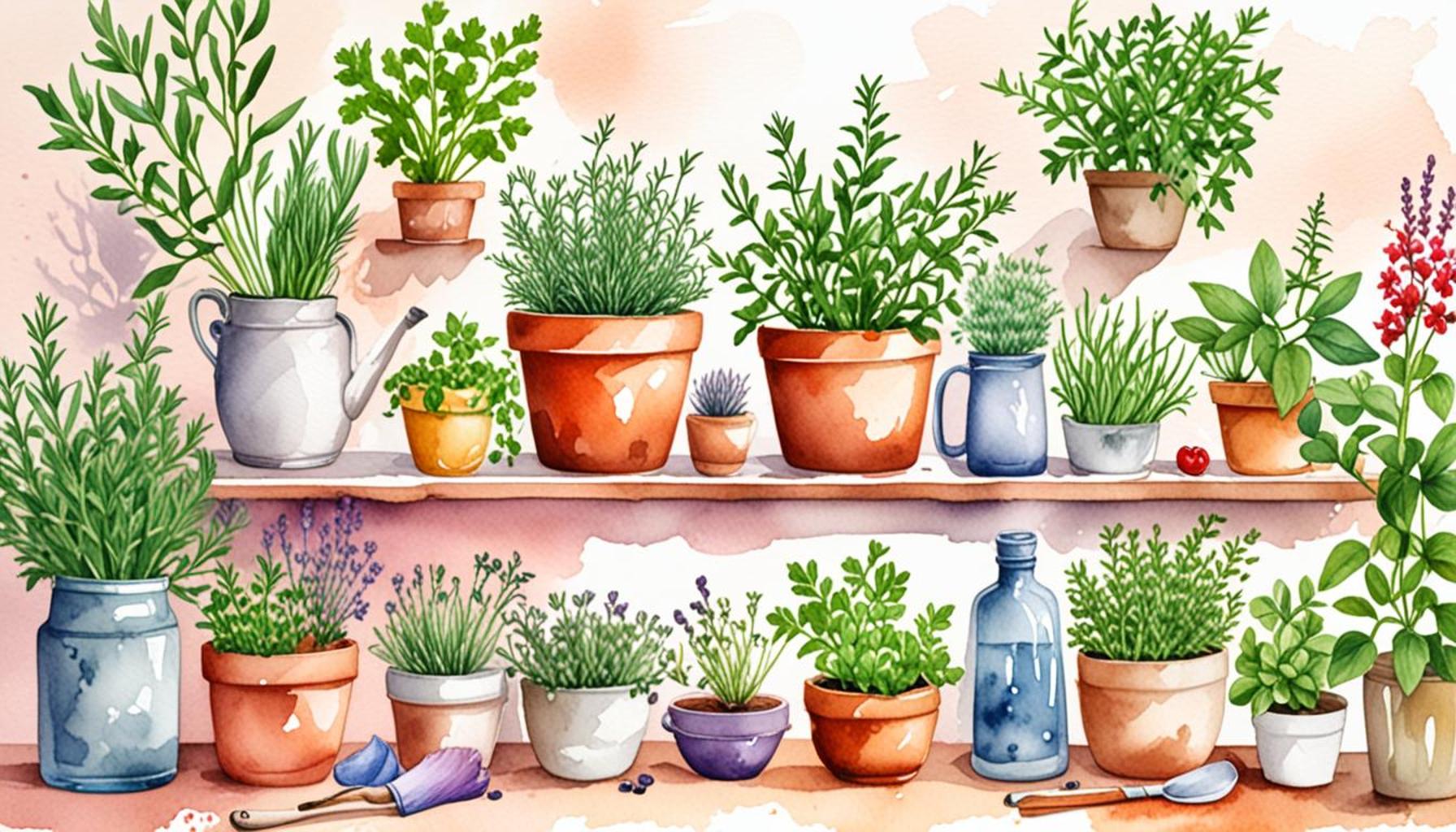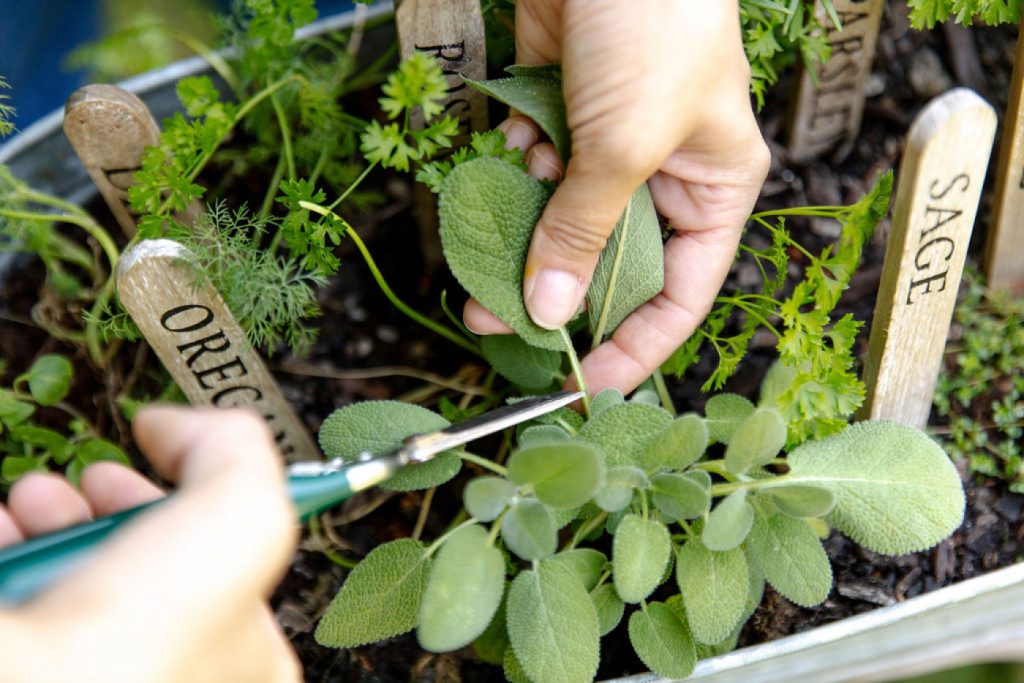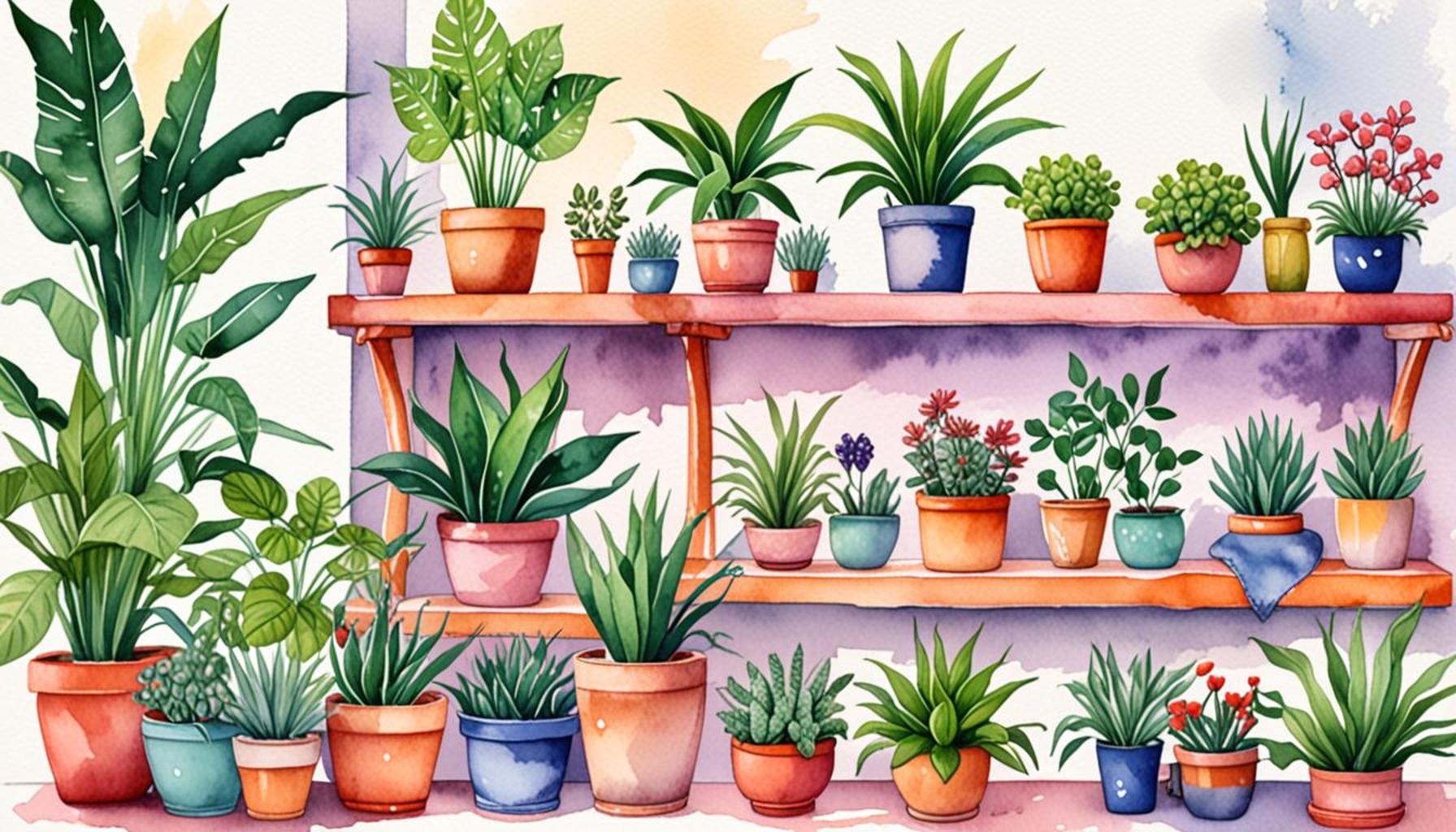Aromatic Herbs to Grow at Home: Selection and Care for Beginners

Unlock the Joy of Growing Aromatic Herbs
If you’ve ever dreamed of enhancing your cooking with fresh flavors, growing aromatic herbs at home is the perfect way to start. Not only do these herbs elevate your dishes, but they also provide a delightful aroma that can invigorate your space. For beginners, selecting and caring for these plants can seem daunting, but with the right guidance, it’s easier than you think.
Here are some popular varieties to consider:
- Basil – A staple in Italian cuisine, ideal for pesto, pizza, and caprese salad. This flavorful herb needs plenty of sunlight and well-drained soil to thrive.
- Mint – Perfect for teas, desserts, and cocktails, such as refreshing mojitos. Mint prefers partial shade and moist soil, making it an excellent choice for indoor growing.
- Parsley – Versatile and packed with nutrients, great for garnishing. It can be used fresh in salads or cooked in dishes like tabbouleh, and it grows well in both sun and shade.
- Thyme – A hardy herb that pairs well with meats, vegetables, and soups. Thyme prefers a dry environment and can thrive in well-drained pots.
- Cilantro – Essential in many global dishes like salsa and curries. Its distinct flavor is a must-have in Mexican and Asian cuisines, and it requires moderately rich soil and sunlight.
Growing these herbs is not only rewarding but also contributes to a more sustainable lifestyle. You can significantly reduce your reliance on store-bought herbs that may not be as fresh. Moreover, many aromatic herbs are perennials, allowing for ongoing yields that can last for years with proper care.
Starting your own herb garden is an economical choice, especially considering the rising prices of organic produce. With just a few pots and a bit of care, you can cultivate your own personal herb garden right in your kitchen or balcony. Imagine snipping fresh basil to add to your homemade marinara. Not only will the flavor be superior, but the aroma of freshly cut herbs will fill your space with an invigorating scent.

In the following sections, we’ll dive into the selection process, essential care tips, and the multifaceted benefits of incorporating these aromatic herbs into your daily routine. Understanding how to successfully grow herbs will revolutionize your culinary experiences and give you a profound sense of accomplishment. Moreover, experimenting with different culinary applications can lead you to discover new flavors and recipes that elevate your cooking to the next level. Embrace the joy of gardening while nurturing your taste buds and enjoy the greener aspects of your life!
DISCOVER MORE: Click here to learn about the impact of harvesting on plant health
Choosing the Right Herbs for Your Home Garden
When embarking on your journey to cultivate aromatic herbs, the first step is to select the right varieties that suit your culinary needs and growing conditions. Here’s a closer look at some beginner-friendly herbs, along with their key growth requirements to help you make informed choices:
- Basil – Known for its aromatic and sweet flavor, basil loves warm weather and is best grown in full sun. It thrives in temperatures between 70-90°F. Use a large pot with well-draining soil to facilitate optimal growth. Regular pruning encourages bushier plants and enhances flavor.
- Mint – A hardy perennial that can spread quickly, mint is forgiving to novice gardeners. It does well in partial shade with moist soil but be cautious as it can overtake your garden! Plant it in a pot to manage its growth. Fresh mint is particularly refreshing in drinks and desserts.
- Parsley – This biennial herb can flourish either in full sun or partial shade. It prefers a rich, well-drained soil, making it versatile for beginner gardeners. Parsley can last for multiple growing seasons if you trim and care for it appropriately. It adds a nutrient boost and flavor to numerous dishes.
- Thyme – A drought-resistant herb, thyme is perfect for those who may forget to water regularly. Needs full sun and thrives in dry, well-drained soil. This herb is resilient and can survive harsh conditions while infusing your meals with a touch of earthiness.
- Cilantro – Often referred to as coriander when the seeds are harvested, cilantro needs full sun and rich, moist soil. This delicate herb grows quickly, allowing you to enjoy its vibrant flavors in a short time. It’s commonly used in salsas and garnishes across various cuisines.
Selecting the right herbs goes beyond their culinary benefits; their scents can transform your living space into a fragrant haven. Opt for herbs based on your taste preferences, the recipes you frequently prepare, and the sunlight available in your growing area. Consider starting with a few varieties to see which ones you enjoy the most before expanding your garden.
The Ideal Growing Conditions
Understanding the ideal growing conditions for each herb is crucial for beginners. Aromatic herbs typically require well-drained, nutrient-rich soil and adequate sunlight. Here are some tips on how to create a thriving environment:
- Sunlight: Most herbs need at least 6-8 hours of sunlight daily. If you’re growing indoors, place pots on a south-facing windowsill where they’ll receive maximum light.
- Soil: Use a quality potting mix designed for herbs or a mix of garden soil with compost to ensure proper drainage and nutrients.
- Watering: Water herbs in the morning, allowing the leaves to dry before nightfall to prevent fungal diseases. Ensure pots have drainage holes to avoid overwatering.
With these selections and conditions in mind, you’re set to start your aromatic herb-growing adventure. Not only will you experience the joy of gardening, but you will also elevate your culinary creations with the freshest flavors right from your home!
The Best Aromatic Herbs to Grow at Home
When it comes to aromatic herbs that are perfect for beginners, a few standout options make for an excellent introduction to indoor gardening. Among these, basil, mint, rosemary, and thyme are not just flavorful additions to your meals; they also offer a delightful fragrance that can enhance your home environment.
Basil
Basil is a vibrant herb that prefers warm temperatures and thrives in bright, indirect sunlight. This aromatic herb adapts well to container gardening, making it easy for novices to cultivate. With a rich, invigorating flavor, basil can elevate dishes like pastas and salads. Regular trimming encourages bushy growth and helps prevent flowering, which can diminish the flavor.
Mint
Another excellent choice is mint, which is known for its refreshing aroma. It’s a vigorous grower that can spread quickly, so keeping it in a pot is advisable. Mint loves ample water and partial shade, making it a versatile herb for beginners to manage. Infuse your beverages and desserts with its delightful flavor or use it to freshen up your garden space.
Rosemary
Rosemary, with its needle-like leaves and woodsy aroma, adds depth to various culinary creations. It thrives in well-drained soil and full sunlight. Its drought-resistant nature makes it an ideal choice for those new to gardening. Rosemary not only enhances your dishes but also can thrive both indoors and outdoors, proving its adaptability.
Thyme
Last but not least, thyme boasts a multitude of varieties, each favoring different culinary profiles. Its delicate flavor can complement a wide range of dishes. This resilient herb prefers well-draining soil and full sun; it’s a low-maintenance option for beginners. Thyme is also wonderful for attracting beneficial pollinators to your garden, enhancing both beauty and productivity.For a visually engaging and informative exploration, here’s a summary of the advantages these herbs provide:
| Category | Advantages |
|---|---|
| Flavor Enhancement | These herbs can elevate the taste and aroma of cooking, inviting culinary creativity. |
| Ease of Care | All these herbs are suitable for beginners, requiring minimal maintenance with proper sunlight and watering. |
Exploring aromatic herbs at home not only brings incredible flavors to your kitchen but also adds a touch of nature to your living space. Embrace the journey of home gardening with these wonderful plants that invite both nourishment and joy into your life.
DISCOVER MORE: Click here for essential herb harvesting tips
Essential Care Techniques for Thriving Herbs
Now that you’ve selected your aromatic herbs and established their ideal growing conditions, the next crucial step is to understand the essential care techniques to ensure they flourish. Proper care not only nurtures the plants but also enhances the flavors and aroma you’ll enjoy in your dishes. Here are some important practices to keep your herb garden vibrant and productive:
Fertilization
While many herbs are relatively low-maintenance, providing them with the right nutritional support can significantly impact their growth and flavor profile. Organic fertilizers, such as fish emulsion or compost tea, are excellent options that can be used every 4-6 weeks during the growing season. These feed the plants without overwhelming them with synthetic chemicals. When starting out, consider using a balanced fertilizer with an N-P-K ratio (nitrogen, phosphorus, and potassium) close to 10-10-10, which supports overall growth.
Pruning and Harvesting
Regular pruning is essential for herbs like basil and mint. Not only does it prevent the plants from becoming leggy, but it also encourages fuller growth. Focus on trimming above the leaf nodes, which stimulates bushier growth and helps prevent flowering, as many herbs can lose their flavor once they begin to bolt. Harvesting should be done as needed, but remember to leave enough foliage on the plant so it can continue to grow.
Pest and Disease Management
No garden is without its challenges, and aromatic herbs can attract pests like aphids, spider mites, and whiteflies. Implementing integrated pest management practices can greatly reduce the impact of these invaders. Encourage beneficial insects, such as ladybugs and lacewings, by planting flowers like marigolds or dill nearby. Regularly inspecting your herbs helps you catch any infestations early. For mild cases, a spray of water can remove pests, while neem oil serves as an effective organic treatment for more persistent infestations.
Seasonal Adjustments
As seasons change, so do the requirements of your herbs. Many annual herbs, such as basil and cilantro, will thrive in spring and summer, while perennials like thyme and mint will need special care during winter. If you reside in a region with cold winters, consider bringing pots indoors or using row covers to protect them from frost. Alternatively, growing herbs indoors can allow you to enjoy fresh flavors year-round. Ensure proper lighting and humidity levels to mimic outdoor conditions; using grow lights can be particularly effective during darker winter months.
Common Mistakes to Avoid
Even the most experienced gardeners can make errors, so being aware of common pitfalls is essential. Overwatering remains a frequent issue, leading to root rot and diminished plant health. Ensure that your pots have good drainage, and allow the soil to dry slightly between waterings. Additionally, neglecting to rotate your herbs can lead to uneven growth; allow different herbs to be positioned for optimal sunlight exposure in your growing area.
By implementing these care techniques, you can cultivate a flourishing herb garden right in your home. As your confidence grows through practice, you’ll discover the many ways aromatic herbs enhance both your meals and your gardening experience.
DISCOVER MORE: Click here to learn about the importance of soil testing
Conclusion: Embrace the Flavor of Homegrown Aromatic Herbs
By now, you should be well-equipped with the knowledge needed to select and care for aromatic herbs in your home garden. The delight of growing herbs such as basil, mint, and rosemary lies not only in their culinary applications but also in the satisfaction of nurturing plants from seed to harvest. As you explore the diverse range of flavors and scents these herbs offer, remember that every step—from choosing the right varieties to proper care techniques—plays a significant role in your gardening success.
As you cultivate your herb garden, consider it an evolving project that brings joy, creativity, and fresh ingredients right to your kitchen. Experiment with mixing different herbs in dishes, or perhaps even creating your own herbal blends for seasoning. The beauty of growing herbs at home is the opportunity to customize your selections based on your culinary preferences and local growing conditions. Whether you’re starting with just a few pots on your windowsill or transforming an outdoor space into a thriving herb patch, your journey into the world of aromatic herbs will be rewarding and fulfilling.
Lastly, embrace the learning curve. Mistakes are part of the process, and each challenge presents a chance to improve your gardening skills. By continuously refining your approach to herb care, you’ll find that your garden not only thrives but also enriches your cooking and lifestyle in delightful ways. So grab your gardening tools, choose your favorite herbs, and embark on this aromatic adventure today!


